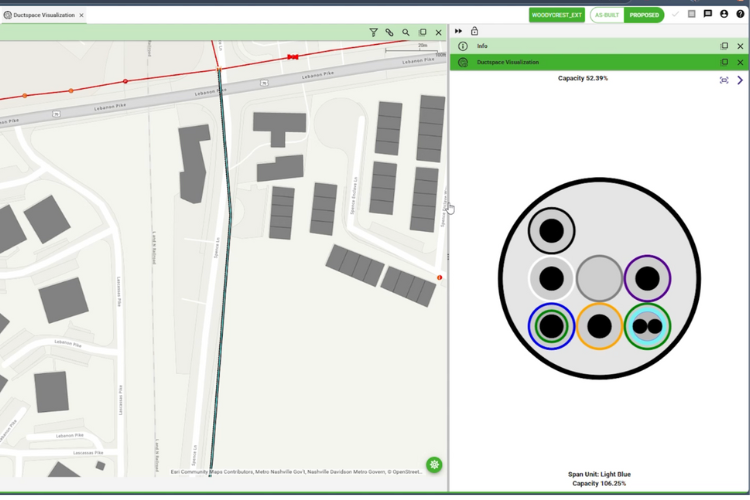In fiber network operations, change is constant. Whether turning up a new customer, rerouting around a break, or expanding capacity, the underlying network data is always in motion. Planning those changes within fiber network management software helps ensure accuracy, visibility, and alignment across teams—but executing them without disrupting the live operational environment presents an entirely different challenge for network operators: the need to understand both what’s currently installed and what changes are planned.
Yet many of the tools in use today make it difficult to navigate both states at once. Let's dive into why and how new technology is helping.
Why traditional versioning falls short in modern networks
Historically, the industry’s answer to managing change has been versioning. Each planner works in their own copy of the network, mapping out modifications in isolation. On paper, this seems reasonable—no one disrupts the “real” network until the work is complete.
In practice, it’s messier. Teams don’t always know what others are planning. Two people might reserve the same fiber for different customers. A third could unknowingly overwrite both. Suddenly, you’ve got conflicting plans requiring manual cleanup.
As automation, integration, and service orchestration become more essential, the versioning problem only gets worse. Every integration point—whether with OSS/BSS, field tools, or inventory systems—would need to navigate multiple copies of the truth. This presents a fundamental limitation in any effort to scale.
How do you plan for tomorrow without compromising today?
The answer starts with visibility. Operators need a way to track both current and planned states of the network at once, without sacrificing accuracy or introducing unnecessary complexity. They need to see what’s changing, when it’s changing, and how it will impact existing services.
This is exactly what Planned Connections in 3-GIS | Web is designed to solve.
What is Planned Connections?
Rather than duplicating entire versions of the network, Planned Connections allows teams to work directly in the live environment—tracking proposed changes alongside the current as-built state. Users can switch between what exists today and what’s being planned to understand impact, reduce conflicts, and coordinate more effectively—all without disrupting ongoing operations.
Here’s how it works:
- As-built view: Shows the current, operational state of the network.
- Proposed view: Displays pending changes—like new customer connections, reroutes, or equipment upgrades—that are planned but not yet implemented.
Toggling between the images below shows the as-built versus proposed view in this network. While the infrastructure looks the same on the surface, connections at the splice point have changed.

Tracing Signal 1 in as-built network

Access to both states within the same system keeps planning aligned with operational realities, even when timelines shift. With proposed changes embedded in the fiber management system’s live environment—rather than managed in isolated versions or external tools—planners, engineers, and field teams can work from a unified dataset. This reduces the risk of conflicts, preserves data integrity, and supports integration with OSS/BSS and automation platforms, paving the way for scalable, streamlined workflows.
Change doesn’t have to be disruptive. With the right tools in place, network operators can stay ahead of demand, minimize risk, and build with greater confidence. Planned Connections offers a smarter way forward—one where planning and execution work hand in hand.
Want to see Planned Connections in action? Check out our webinar, A smarter approach to managing change in live networks.



